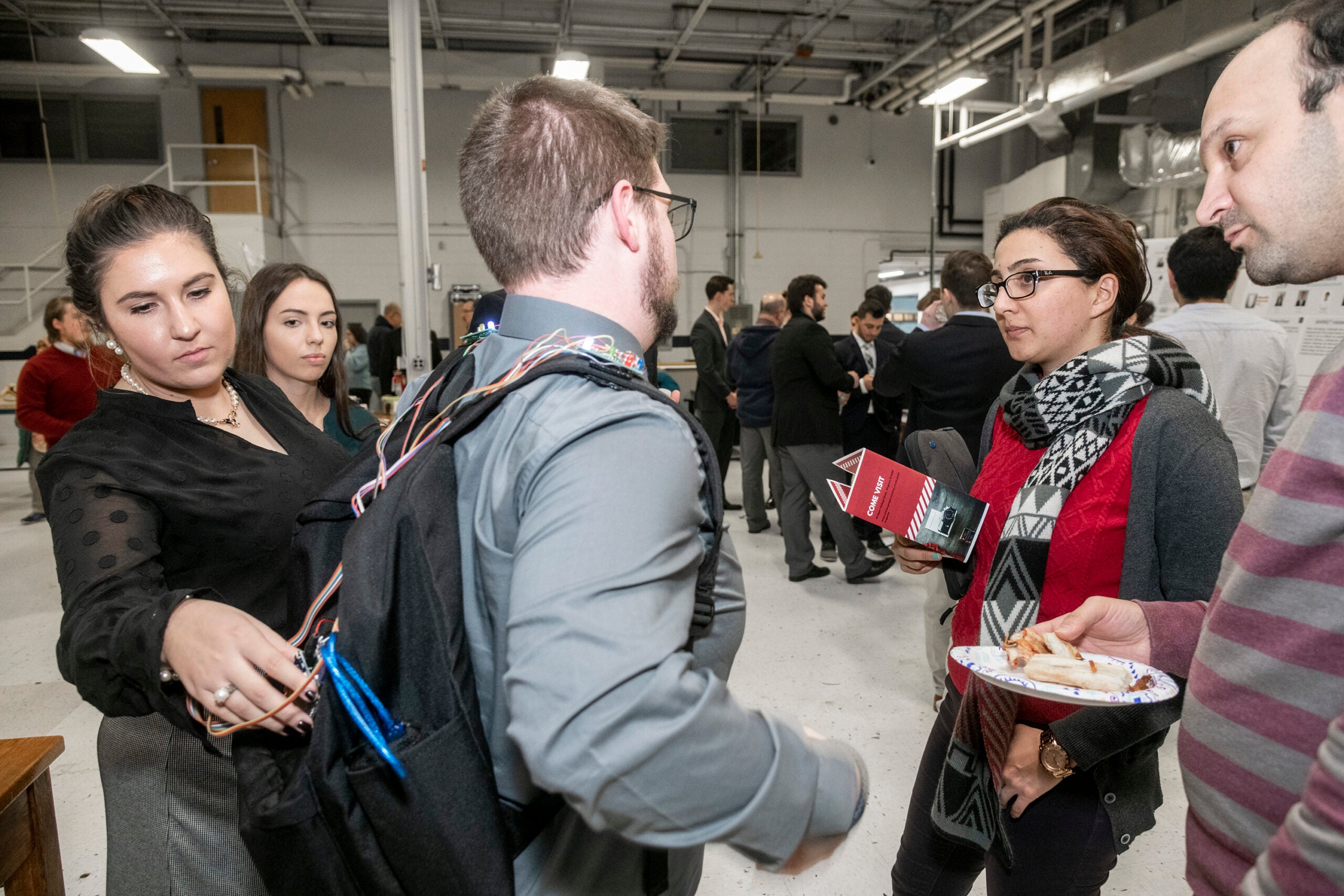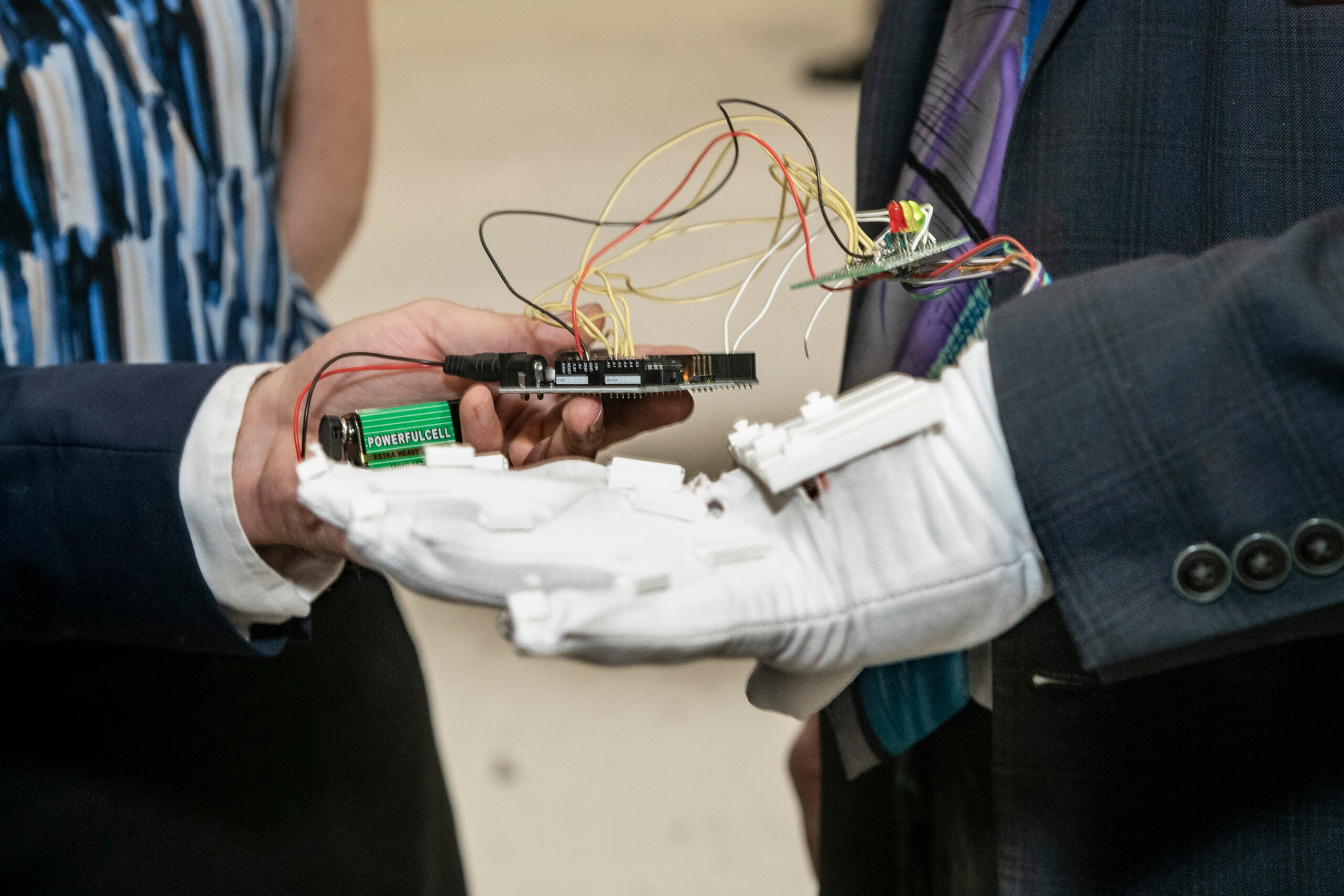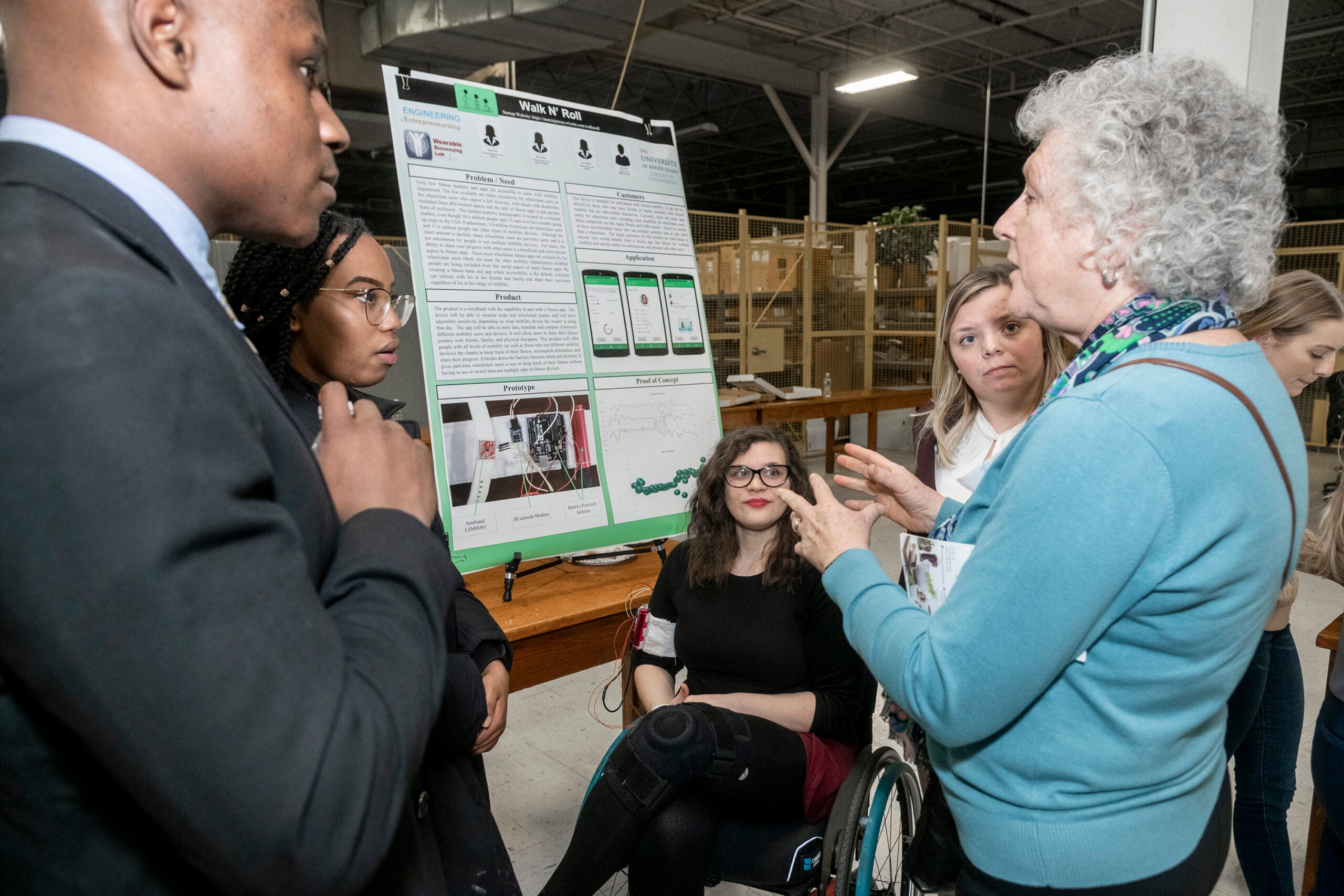KINGSTON, R.I. – December 19, 2018 — In the business world, people are accustomed to pitching a concept or a product under pressure. Engineers on the other hand, aren’t normally taught this skill.
But that changed recently as nine teams of University of Rhode Island engineering students had six minutes to convince an audience of their peers, faculty and leaders of industry that the product they developed in their Engineering Entrepreneurship I course (EGR 325) was needed to solve a real-world problem.
The four-person teams applied their newfound marketing and business skills during their presentations, which took place recently in the URI College of Engineering space at Schneider Electric.
While displaying their prototypes, the students used slides and short videos to describe how their products are different than those already available to consumers.

After the groups finished their presentations, the audience had an opportunity to approach each team and ask questions about their designs and the thought process behind their products.
The interactions played a big role in determining the Audience Choice Award, presented to a group that developed a fitness tracking app for people who are mobility-impaired. The objective of the app, named Walk n’ Roll, would enable those with impairments to participate in fitness challenges with friends who don’t have physical impairments.
The winning team was the only group to have non-engineering majors on it. Shimra Fine, a second-year graduate student majoring in textile science, and Matt Delva, a junior economics student, combined their areas of expertise with those of biomedical engineering students Kiera Mantyla and Merci Ujeneza.
The team also tapped into the real-world experiences of one of its members.

“When we were brainstorming, I mentioned to my teammates that there weren’t any fitness trackers and apps that met my needs, as someone who uses a wheelchair, a rollator, and on rare occasion, a cane,” said Fine, who is from Silver Spring, Md.
Once the group settled on a concept, the next step was sorting out areas of responsibilities.
“Working with students from other majors, we figured out each other’s strengths and weaknesses rather quickly,” said Delva, a resident of Cumberland, R.I. “We didn’t have to waste much time with a feeling out process.”
The showcase event culminated 14 weeks of learning how to convert a concept into a marketable product.
“It’s a challenge to develop an entrepreneurial mindset among engineering students, because they are taught differently in engineering curriculum,” said Assistant Professor Kunal Mankodiya, who taught the course. “It takes time and effort to get them to think about creativity and innovation. However, once they are on track, they come up with some amazing ideas.”
The course had three phases: exploration, ideation and creation. At each stage, the students had to attain a new set of learning milestones.
The exploration phase required the students to work independently to learn about the hardware and software that they would use. In the ideation phase, they formed their teams and learned about design thinking and rapid prototyping for the Internet-of-things and smart wearables. During the creation phase, the students developed their business skills, which included their ability to demonstrate and pitch their prototypes.
Throughout the semester, Mankodiya made sure the students received plenty of support and feedback from mentors and coaches, including entrepreneurs, faculty and graduate students.
In addition to 11 mentors comprised of faculty and business experts, four doctoral students from Mankodiya’s Wearable Biosensing Lab, Reza Abtahi, Nick Constant, Josh Gyllinsky and Manob Jyoti Saikia, served as technical coaches.
On Nov. 5, Mankodiya had the professional and student mentors spend time with each of the teams. In 35-minute blocks, the teams met with one or two mentors, followed by a 45-minute networking session/poster presentation. The teams were also trained to do a 90-second elevator pitch before some of them went to pitch their ideas at the Rhode Island Business Plan Elevator Pitch Competition.
One of the guest mentors was Aidan Petrie, founding director of the New England Medical Innovation Center, which provides support to innovators and entrepreneurs in the medical technologies field. Petrie gave an opening lecture to the class in September.
URI Associate Vice President of Intellectual Property & Economic Development Michael Katz spoke to the class one day about what it takes to get a product patented.
“Although the students’ projects were in the preliminary stage at the time, it was good for them to learn about the patent process,” Mankodiya said.
The result of the students’ hard work was a wide variety of devices that addressed health or safety challenges faced by children, adults and seniors.
One of the creations was a toothbrush for kids, that made brushing fun by awarding points through an app if they brushed for the correct length of time.
Another team designed a water bottle that tracks a person’s daily water intake. The bottle shines a light from the bottom, alerting the person if they are under, on track or ahead of the daily recommended amount of water consumption.
A small safe with a breathalyzer attached to it was designed to prevent people from driving under the influence. Users place their car keys in the safe and are only able to get them out if they register a blood alcohol content of .02 or lower on the breathalyzer.

